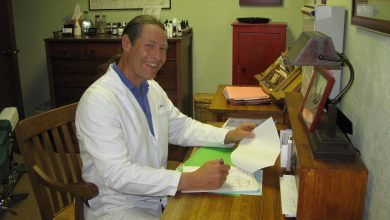Old World Sauerkraut in a New School Way
An special interview with Pickled Planet Founder Courtlandt Jennings
So What exactly is sauerkraut anyway and how long have you been involved in making it?!
Sauerkraut is pickled cabbage. To make it, cabbage is shredded, salted and left to ferment in a de-oxygenated environment for 4-6 weeks. It can ferment for much longer and sometimes does. The salt, via osmosis, pulls water out of the cabbage to form brine that helps protect the kraut while it is fermenting. Some modern recipes use vinegar, but the traditional method just uses salt and occasionally filtered water to add brine volume. Three phases of microbial activity produce lactic acid and improve vitamin content while converting sugars in the cabbage. We age it till the PH is anywhere from 3.4- 3.1 and the texture is close to previous batches. It’s tough though, inconsistencies are always present in artisanal food and while these texture and taste differences can be explored and enjoyed they are a surprise to some. Different varieties of cabbage, different fields, harvest and ripening temperatures, spices vary greatly as well. There are many factors affecting consistency in any products and so it is if you want real food.
We started making it…when a kind soul offered me an affordable kitchen after tasting some pickles and kraut I made. That kind soul was Jon Warren and his kitchen at the Bard’s Inn, once a great restaraunt, now an incubator. I started selling at the farmers market, met some helpful helpful people that showed me some ropes in the food industry and launched the product line into stores by 2003. It has always been well received and I consider myself lucky to have such supportive and interesting customers, and suppliers for that matter. Thanks for the kudos over the years.
We have continued to grow and now have many customers all over Oregon and Northern Cal. The location is no longer the Bard’s Inn and what started as a simple desire to do something I believed in has graduated into being a business that has changed me in ways I never saw coming. I hope to one day have a few partners, and pay with profit sharing incentives, perhaps make it a coop of sorts, utilize local currencies as possible in operations. Pickled Planet is part of the change in business ethics and I started it knowing that one business at a time can change how business is done, especially w/ regards to profit sharing. Please don’t get me started…mypickledplanet.blogspot.com if you want the rants.
Who actually invented sauerkraut?
Earliest recordings of fermented vegetables come from NE China (Manchuria) It is said that Genghis Khan brought the art of lacto-fermenting (using lactic acid producing bacteria) vegetables from central Asia to W. Russia when the Mongols were conquering. This would be in 1237. It most likely trickled from there westward into Poland, Germany, and the Netherlands, France and beyond. At some point in that time line it was developed into what is now sauerkraut. There are lacto-fermenting and yeast fermenting traditions for both food and beverage, all over the world.
How is your gorgeous kraut different from the nasty stuff in a can?
Modern food manufacturers can or jar their kraut using heat in order to extend shelf life. Pickled Planet sauerkraut is packaged into jars at room temperature, with it’s own brine solution, then refrigerated to preserve the vitamins and beneficial bacteria. Live or raw sauerkraut also has a distinctive flavor very different from the canned version.
Why is Sauerkraut good to eat and how much should one eat?
Our sauerkraut is good for you because it is a potent source of vitamins, lactic acid (which is good for intestinal flora) and beneficial micro-organisms, such as lacto-bacillus plantera.
How much to eat..You can eat as much as you like really, though if you’ve never eaten raw sauerkraut I suggest prudence in your initial contact. The slaw is full of living beneficial micro-organisms that will go to work clearing out undesiralbles in your stomach and intestines right away. If you have some battles going on, don’t be surprised. The battles will be more intense if you eat a lot the first few times, but you can ease into by eating only one or two fork fulls each day the first week. After that you’re sporting humanities best defense force ever found, healthy intestinal flora! You are free to eat it anyway you like, feel free to share your ideas w/ me via our web site. I pair it with most of my meals and it is a great hangover cure!
What’s the deal with live and raw food?
The words live and raw pertaining to food are both used frequently by many people to describe what ever their perception of them is. Here’s our take. Both theoretically contain enzymes because raw refers to un-cooked and most enzymes cannot tolerate high heat. Some raw foods are heated at low temperatures to enhance flavor or texture. Temperatures below 108-114 degrees F. are used to make raw crackers, pies and fruit leather. The sun is also available for this sort of thing. Live refers to food that is some how woken up as in seeds soaked or then into sprouts or vegetables colonized with lacto bacteria like sauerkraut or kim chee.
How can a jar be good for a full year?
In a cold environment (your fridge) the lactic bacteria are dormant but still preserving the cabbage, which is their host. The bacteria actually preserve the cabbage for this purpose. We’ve left experimental jars at room temperature for months with no ill effects. We don’t suggest this but we can assure you if handled well (in your fridge) it will last for about a year. Once you have a taste for it, good luck keeping it around that long (in your fridge).
I heard a rumor about not double dipping the sauerkraut?
That’s right, our mouths are the dirtiest places around and if the mix of germs and bacteria present in our mouth get into a jar of kraut they can cause mold, rot and loss of texture. This double dipping is true with any food in your fridge, but the kraut will loose all that great shelf life, so please don’t double dip.
What is real salt compared to sea salt? This is listed as an ingredient you use.
Real salt comes from the ancient sea that covered most of Utah. It is harvested by Redmond Real Salt and is full of trace minerals. It is less polluted than sea salt and that’s why we use it.
Where are your products sold? They sell where ever the post office goes, they sell in stores from Chico to Portland, and around the valley at the Food 4 Less, Ashalnd coop, shop n kart, market of choice, Tark’s market in Talent, and a few resturants around town, Grilla Bites, Larks, Pangea, coop lunch line.
I also see you have an online website and at $6 / jar you are offering people an amazing deal. How can we help support your business?
Tell people to tell their friends online also where to buy it. www.Pickled Planet.com More web sales would be really helpful. Family members of friends that live elsewhere are key to my business, they turn others on and I get exponential attention. Take an interest in your own health, these foods we make will round out a healthy diet in amazing ways. Tell the growers market you want to see me back at the market, serving products made with local ingredients.
Last but far from least, Enjoy your life, it’s too short to be caught in the ideas that pass like clouds through our heads. Write a poem, take a hike, make love, watch a cloud pass or a bug dance, stay inspired and hopeful, dream the big dreams and do the little things that make life rich and interesting. Thanks again, it’s an honor to do business in Ashland! Everyone should thank Shields too!
Read this in more in the upcoming March 09 Issue





